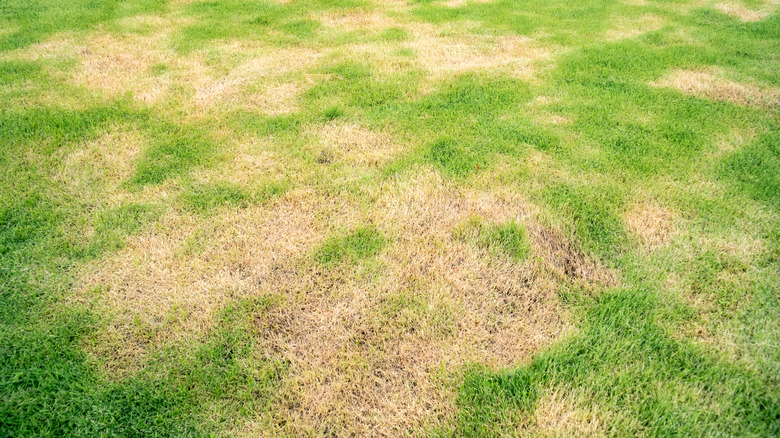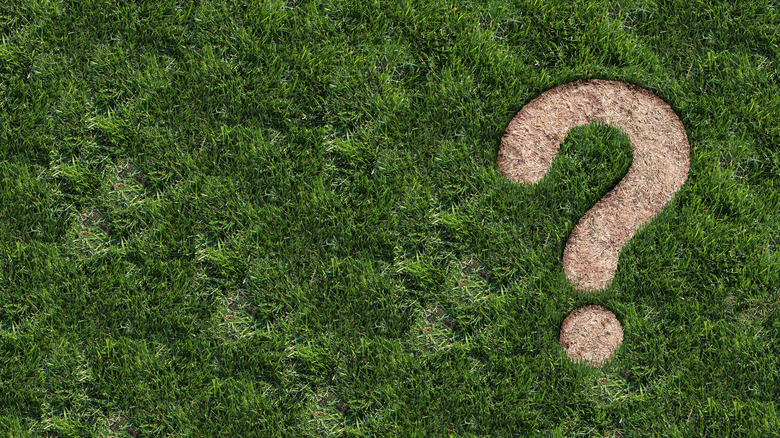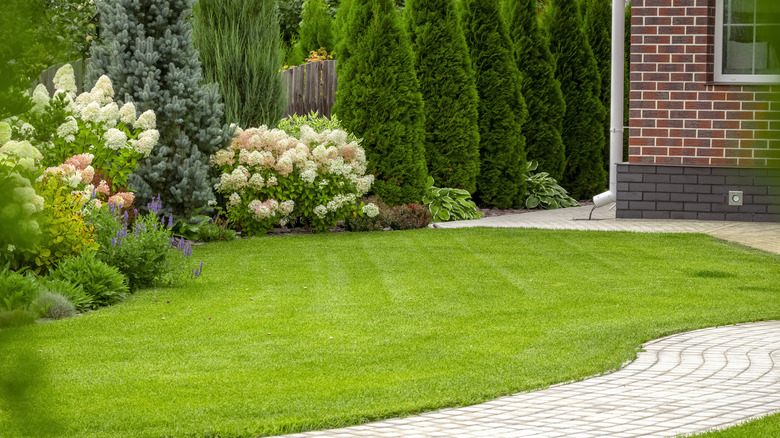The Best Way To Repair Patches On Your Lawn
The unkempt look of a patchy lawn is unpleasant to look at and can take away from the general appearance of your home. If this sounds like your lawn, you need to give it some TLC to reclaim those aesthetics and the curb appeal of your home. The best way to repair a patchy lawn is by removing the top layer of dead grass and weeds from the patches. After this, you can use a tool like an aerator to loosen the soil to revive it in those dead areas. Adding some topsoil to the patch can facilitate this process.
Now, the lawn is ready to receive new seeds. Take the same seed mix that grew in the rest of the lawn, spread it on the patches, and mix it into the soil. As the seedlings grow and the grass starts to come in, fertilize and water them properly to help them along. This is the best way to revive your lawn.
What causes lawn patches?
There are several reasons why a lawn can get thin in some areas and lose its greenness; identifying the cause can help you determine the best way to fix it. Two common causes are watering too much or too little. With an insufficient amount of water, patches will develop because they're not getting what they need. On the other hand, overwatering overwhelms the roots as the grass tries to grow.
Soil compaction and low soil quality are other common causes. When soil particles don't have enough space between them, the roots won't be able to get nutrients properly, which weakens the grass and results in patches. Fungus damage or other kinds of disease could also be behind your patchy lawn, so fungicide or insecticide will be needed if you identify this to be the case. A specific type of impact on an area of your lawn can be another root cause. If there's heavy foot traffic in a certain area or your pet urinates in a specific spot, your problem might not be lawn care at all, and those other issues need to be addressed first.
How to keep your lawn green
If you've started over with your lawn, either completely or gradually, as explained above, you need to pay attention to these common causes to prevent patches again. Properly repair any new patches as soon as they start to develop and avoid risky repair shortcuts. To keep your lawn green, get it right from the grass you choose. The best seed mix has the right variety for your soil and your environment, and you're well-informed on how much maintenance and care it requires of you.
Another thing that a green lawn has is a watering schedule that is regular but not too often. This is so the soil doesn't get soaked repeatedly but receives just the right amount it needs for the roots to be fed. About half an inch of water every three to four days could work. Lastly, mowing and trimming. You'll need the right tools with sharp blades to be efficient during this part of your lawn care routine. Cut at the right height, not too low or too high, and alternate your movement patterns to achieve an even lawn.


